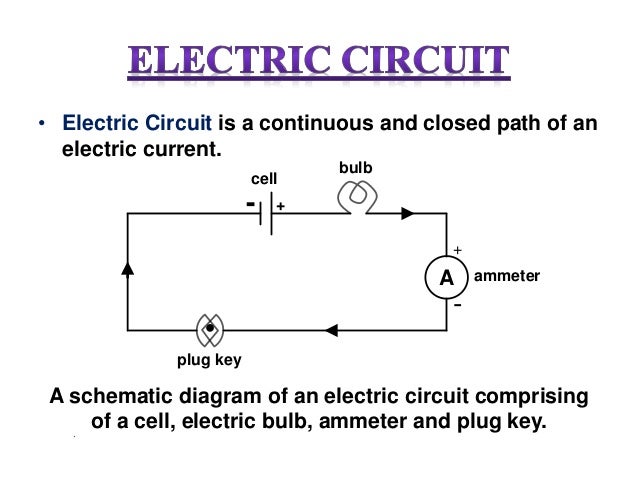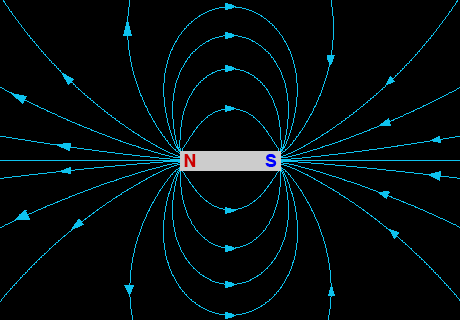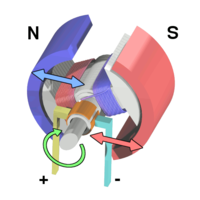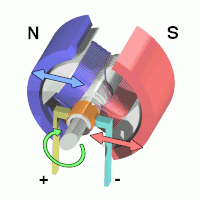Electricity is essentially the force that charges exert on each other, and magnetism is the force that moving charges exert on each other.
Magnets
A magnet is any object that has a magnetic field and attracts magnetic objects like iron, steel, nickel, and cobalt.
Magnetic Fields
A magnetic field is the space surrounding a magnet. When an electric current flows through a wire, a resulting magnetic field is created. Therefore, magnetic fields are created by the movement of electrical currents. The magnetic field of a bar magnet results from the motion of the negatively charged electrons in the magnet.
Magnetic Lines of Force
Like an electric field is described by drawing electric lines of force, a magnetic field is described by drawing magnetic lines of force.
Types of Motors
There are many different types of motors, but the main two types are AC and DC motors.
DC Motors
Today, DC motors are no commonly used in engineering. However, they have often been used in industrial uses for a long time. With a DC drive, these motors provide very precise control.
Things they're used in:
- conveyors
- elevators
- extruders
- marine applications
- material handling
- paper, plastic, rubber, steel and textile applications
- automobiles
- airplanes
- portable electronics
- speed applications
Pros:
- easy to control long-term speed; torque-speed is easier to tailor than AC
- smaller than AC motors, saving space
Cons:
- need brushes to connect the motor; brush wear occurs = need to replace brushes often
- sparks from brushes; could cause explosion if near explosive materials
- radio noise from brushes could interfere with nearby TV sets, etc.
- more expensive than AC motors
Types of DC motors:
There are brush DC motors and brushless DC motors. The ones listed below are all brush DC motors.
- shunt wound - rotor and stator windings are parallel
- separately excited motor - rotor and stator are each connected to a different power supply
- series wound - rotor and stator connected in a series; more torque than other DC motors
- compound wound - stator and rotor are connected by shunt and series windings
- If shunt & series windings add together = cumulatively compounded
- If shunt & series subtract from each other = differentially compounded
- permanent magnet - stator is a permanent magnet; motor is smaller
- servomotor
- universal
Types of AC Motors
- induction motor - voltage induced in rotor; rotor turns at a slower speed than magnetic field
- synchronous motor - rotor lines up with magnetic field in stator; stator of induction motor, rotor of a dc motor
Other Motors
- reluctance motor - starts like induction motor, runs like synchronous motor
- hysteresis motor - very tiny; torque produced by hysteresis (can be used in electric clocks)
- stepper motor
- brushless DC motor
- universal motor
http://physics.info/lorentz/
http://science.howstuffworks.com/electromagnet.htm
http://www.howmagnetswork.com
http://www.ece.uah.edu/courses/material/EE410-Wms2/Electric%20motors.pdf
http://www.electrical-knowhow.com/2012/05/classification-of-electric-motors.html








No comments:
Post a Comment